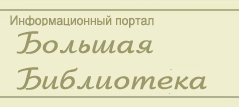Другое : Bosch, Hieronymus: The Temptation of St Anthony
Bosch, Hieronymus: The Temptation of St Anthony
Bosch, Hieronymus: The Temptation of St Anthony
c.
1500; Oil on panel, tryptych describing the ordeals of St Anthony; Museu
Nacional de Arte Antiga, Lisbon
Bosch's
spiritual heroes were the saints who endured both physical and mental torment,
yet remained steadfast. Among the saints, Bosch's favorite was Saint Anthony,
the subject of his triptych The Temptation of Saint Anthony (c.1500; Museo
National de Arte Antiga, Lisbon), which features physical punishment on the
left wing, a Black Mass in the center, and the blandishments of food and sex on
the right wing. St. Anthony's triumph over such trials is mirrored by those of
other hermit saints and by the Passion of Christ, whose arrest and carrying of
the cross adorn the exterior of the Lisbon altarpiece.
Bosch
was preoccupied with themes of torment and the sinfulness of man, which
replaced earlier, more optimistic visions of Christ and the Virgin with
feelings of anxiety, fear, and guilt. His sources for such unusual images were
the dark corners of the medieval imagination, the gargoyles and monsters of
cathedral decoration, and the marginal illustrations of books and popular
prints.
In
Bosch's day, temptation not only had the meaning it has today, but also meant
physical/mental assault by demons. So St Anthony is not only tempted by the
pleasures of the flesh and so on, he is also beaten up and terrorized by the
demons.
The
central panel of this triptych illustrates the kneeling figure of St Anthony
being tormented by devils. These include a man with a thistle for a head, and a
fish that is half gondola. Bizarre and singular as such images seem to us, many
would have been familiar to Bosch's contemporaries because they relate to
Flemish proverbs and religious terminology. What is so extraordinary is that
these imaginary creatures are painted with utter conviction, as though they
truly existed. He has invested each bizarre or outlandish creation with the
same obvious realism as the naturalistic animal and human elements. His
nightmarish images seem to possess an inexplicable surrealistic power.
Список литературы
Для
подготовки данной работы были использованы материалы с сайта http://www.ibiblio.org/louvre/paint/
|


